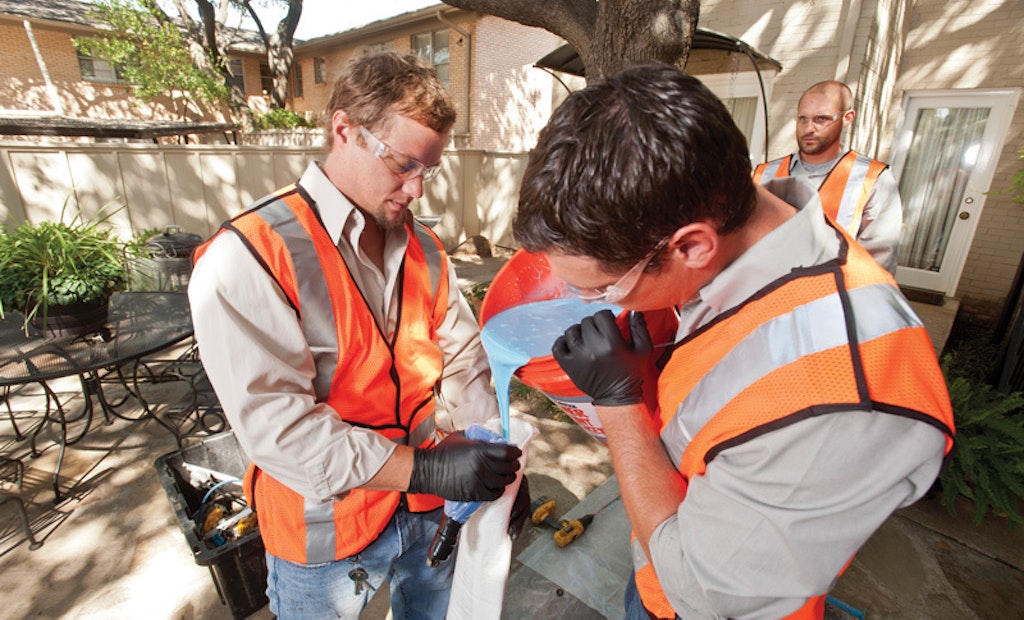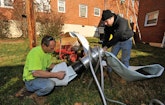
Interested in Inspection?
Get Inspection articles, news and videos right in your inbox! Sign up now.
Inspection + Get AlertsOver the past decade, the cost of CIPP rehabilitation has come down while the level of technology has risen. Shrinking budgets and the declining condition of underground infrastructure have forced municipal utilities to improve their infrastructure as cost-effectively as possible, and home and business owners are always looking to fix their problems with as little disruption as possible, so trenchless technologies are providing a growing market for contractors.
Lanzo Trenchless Technologies, a CIPP and infrastructure repair technologies contractor, provides cost-effective, minimally invasive alternatives to replacing failing infrastructure. The company has plenty of experience working with a variety of lining systems.
“It has been fun not being locked into a specific method because either we manufactured it or we were exclusively tied to it by license,” says Fred Tingberg, business development manager at Lanzo. “This has given us the latitude to serve the owner with the best fit for what would lend itself to a successful project. Having access to an array of methodologies gives us an excellent chance to provide for all performance- and site-specific criteria while meeting the client’s need for project completion and economy.”
Lanzo, with headquarters in Detroit, Mich., and Deerfield Beach, Fla., was profiled in the October 2012 issue of Cleaner. The company has done trenchless repair on more than 10 million linear feet of pipe in diameters as large as 120 inches throughout North America. Some of their most notable projects include lining an 18- to 15-inch transition sewer 20 feet below the Greektown Casino and Restaurant in Detroit, and 12-inch water transmission mains rated at 100 psi that served the Renaissance Center fountain in Detroit.
CIPP preferred
With countless jobs under their belt, Tingberg says the system Lanzo Trenchless Technologies prefers to use is CIPP. “CIPP by far has demonstrated its ability to apply to the broadest range of repairs,” he says.
There are several CIPP technologies available, including nonwoven engineered tubes or liners with a wide array of thermosetting resins determined by the pipeline problem and surrounding environment. The technology can span a wide range of pipe diameters; renew pipes with bends, diameter changes or noncircular geometries; and can be used in gravity and pressure applications.
Sectional lining bladders cover smaller lengths for repair work. They’re available in different configurations and are resistant and reliable.
One issue with CIPP, however, is that weather has to be taken into consideration, according to Tingberg. “Sun and heat exposure must be totally anticipated with thermosetting solutions offered in any of the CIPP solutions.”
Cold weather will also affect a contractor’s ability to source water needed in just about any method of pipe lining as well, Tingberg says.
Many methods
Inversion and pull-in-place lining are two installation methods with CIPP. Lining and curing times vary with each method and should be chosen based on the specific jobs.
There are many other installation methods as well. Sliplining methods include jacked pipe, pulled pipe or segmentally installed methods using fusion weld HDPE, fused PVC, fiberglass, reinforced plastic mortar, vitrified clay or polymer concrete.
“Catastrophic line breaks within our nation’s potable water transmission infrastructure as well as the inconvenience associated with open cut replacement of distribution water mains have caused prioritization of NSF 61 certified rehabilitation methods including sequential carbon fiber/epoxy matrix installation, as well as potable water CIPP,” Tingberg says.
Changing technology
Tingberg notes that there have been many recent imports of European technology that are bringing advances to the lining systems, including UV cure, remote epoxy installation and the growing capacity to perform larger and larger rehabilitations with manufactured “shooter” devices.
“Operators in Japan and Australia have contributed to downhole strip manufacturing methods, which are being implemented in greater scale in remote, large-diameter and difficult access applications,” Tingberg says.
He says one thing he sees in common with all the new technologies is the world’s growing emphasis on green technology.
“Reduced or simply no implementation of solvents such as Styrene is being considered by municipalities at a growing rate,” Tingberg says. “The typical European installation of CIPP today is either UV cured or remote epoxy, either of which would be considered green CIPP by my thinking.”
Going green
“The nation will place a large emphasis on green technologies as was done in Europe,” Tingberg says. “While this comes at a cost, it will be justified by higher quality products and lower social impact within the communities served. From a market standpoint there will be a larger participation by many within the construction and plumbing communities. Manufacturers will continue to advance their materials and methods to meet the demands of the marketplace.”
Tingberg sees many things coming up for the future of the industry, including the changing chemical characteristics of the sanitary systems. “They’ll become more demanding as the chemicals become more concentrated, requiring better resins and more corrosion-resistant materials.”
Tingberg also predicts water main rehabilitation will continue to thrive with better understanding of specific location of system defects in large-diameter PCCP, as well as greater acceptance of trenchless technologies in small-diameter water distribution systems.
“Technologically, I see greater advances in robotics, installation equipment, instrumentation and CCTV,” Tingberg says.







